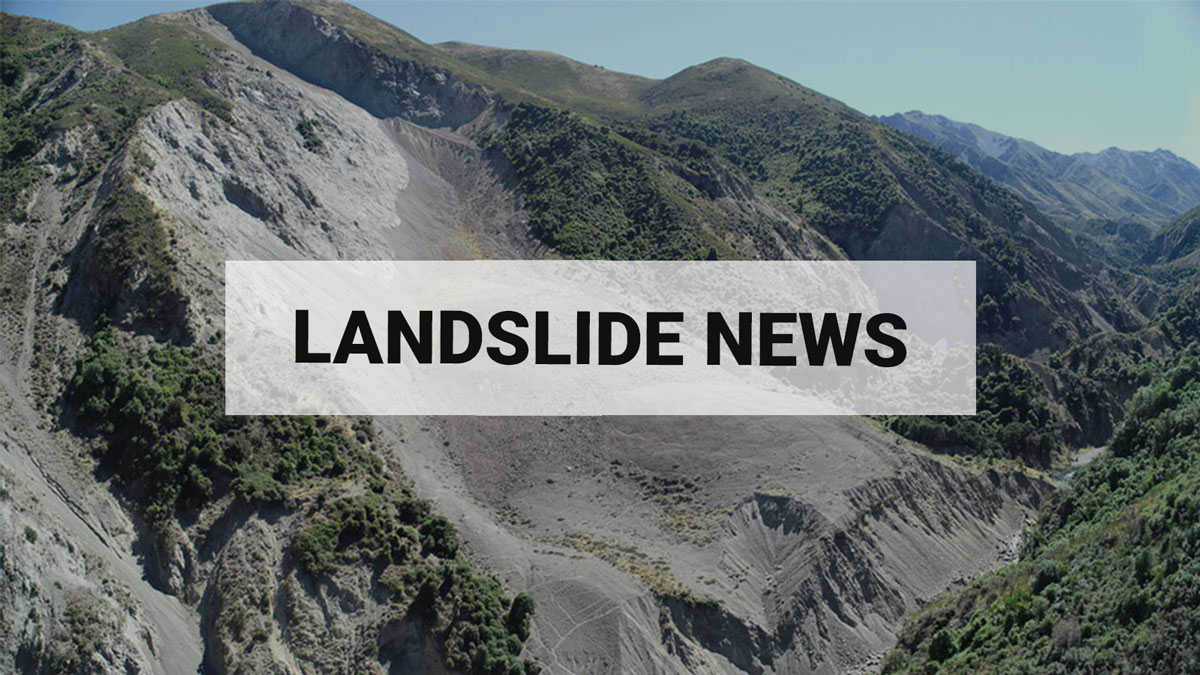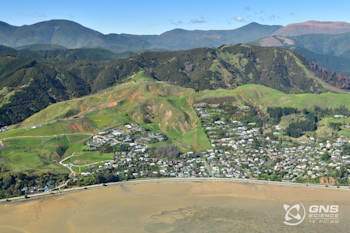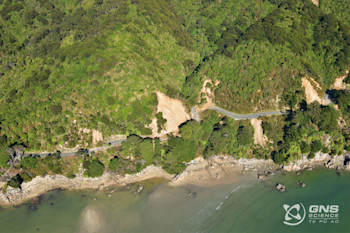
Nelson, Tasman Landslide Response
Hundreds of damaging landslides have been reported across the country following prolonged rainfall last week. The impacts of this event have been most severe in the Nelson Tasman and Marlborough region. As the scale of damage in the Nelson Tasman Regions began to emerge, a landslide event response team from GNS Science was deployed to Nelson.
Why so many landslides?
Between the 17 and 22 of August, large areas in New Zealand were hit with prolonged and heavy rainfall. The top of the South Island experienced up to 1m of rain in just four days, and large areas in the Nelson Tasman districts experienced rainfall totals with annual return intervals of >120 yrs. In some areas, such as the Rai Valley and Kahurangi National Park, these return periods were well over 250 yrs.
These storms have occurred at the end of a long, wet, winter, meaning that much of this rain has fallen onto already saturated ground making it more susceptible to land sliding. Widespread land sliding has been observed in farmland, forestry, regenerating native bush and scrub, and residential areas.
Our Response
The landslide event response team was deployed to Nelson in the first available fine weather window, forecast for Monday and Tuesday (22 & 23 of August). The team spent over five hours in the air, documenting more than 250 of the most critical landslides, and capturing photographs of thousands more. Observations from the initial monitoring and aerial surveys were made available to local geotechnical consultants, Nelson City Council contractors, and Toitū Te Whenua LINZ to aid in the clean-up efforts, plan additional data capture, and assess the safety of the most critical sites.
While the ground remains wet and fresh cracking continues to allow rainfall to flow into unstable slopes, it’s likely that many landslides will continue to cause problems over the coming weeks. The initial response phase of GNS Science activities is expected to be completed with an additional aerial survey led by Marlborough District Council as soon as the weather allows. However, that’s far from the end of the job.
GNS will continue to provide data on the most critical sites over the coming weeks, while detailed mapping of landslide impacts, and rainfall patterns will be completed over the next months. While data from these unique events will be used to aid in immediate response activities, it is also critical for our future planning as well as to develop models that can be used to better predict the impacts of future weather events.
Been impacted? What can you do?
If you’ve been evacuated, continue to stay at your safe location until you have been given the all-clear to return home.
If you notice something different about your home, for example, the doors and windows don’t close, cracks have appeared in the cladding and/or on paved surfaces, or if you observe changes to the hills immediately above or in the ground around your property (new cracks appearing, bulging ground etc.) you should self-evacuate to a safe location and let the council know.
Follow local emergency management advice to keep you and your whānau safe.
Helpful links for current information:
National Emergency Management Agency’s emergency info page.
Nelson City Council’s emergency info page.
West Coast Emergency Management Facebook page.
Marlborough District Council Facebook page.
Our thoughts are with all of you impacted by landslides and to those helping, stay safe.
A landslide may be triggered by heavy rain or earthquakes, with homes near hills or steep slopes most at risk. If you live near a hill or steep slope, watch out for cracks or movement that could be a warning sign. Follow Civil Defence’s advice on what warning signs to look out for, so you can act quickly if you see them.
Toka Tū Ake EQC has information on how to get your home, apartment, or rental prepared for a natural disaster.
Attributable to: Kerry Leith, Landslide Duty Officer
Media contact: media@gns.cri.nz or 021 574 541




